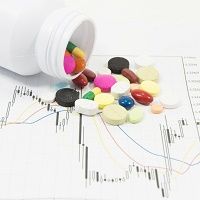SGLT2/DPP-4 Inhibitor Combo Treatment for Type 2 Diabetes
Study results show combination treatment with empagliflozin and linagliptin effectively reduced HbA1c in patients with type 2 diabetes mellitus.

Although there is ample data available on the safety, efficacy, and tolerability of empagliflozin and linagliptin, recently approved by the US Food and Drug Administration for the treatment of type 2 diabetes mellitus, little is known about the drugs when used in combination.
Lead author Sanjay Patel, of Boehringer Ingelheim in Germany, and colleagues presented data at the American Diabetes Association 75th Scientific Sessions in Boston, MA, from 2 year-long phase 3 studies of empagliflozin and linagliptin to determine the safety and efficacy of a combination of the 2 drugs.
“The safety profiles of empagliflozin/linagliptin were similar to the known safety profiles of the individual components with a low risk of hypoglycemia with empagliflozin/linagliptin when used as initial therapy or as add-on to metformin,” the authors wrote.
Obtaining more evidence on this combination is especially important since this is the first time that the FDA allowed the combination of a sodium glucose cotransporter (SGLT2) inhibitor and a dipeptidyl peptidase-4 (DPP-4) inhibitor to treat type 2 diabetes.
The studies enrolled 1,363 patients with type 2 diabetes (at least 18-years-old with an HbA1c ranging from 7.0 to 10.5%) had not taken insulin or glucagon-like peptide-1 analogue in 12 weeks leading up to enrollment. The subjects were assigned to the following treatment arms:
- 251 patients: empagliflozin 25 mg / linagliptin 5 mg
- 255 patients: empagliflozin 10 mg / linagliptin 5 mg
- 256 patients: empagliflozin 25 mg
- 249 patients: empagliflozin 10 mg
- 243 patients: linagliptin 5 mg
“As initial therapy, empagliflozin 10 mg/linagliptin 5 mg significantly reduced HbA1c vs. empagliflozin 10 mg or linagliptin 5 mg,” the study reported. “And empagliflozin 25 mg/linagliptin 5 mg significantly reduced HbA1c vs. linagliptin 5 mg, but reductions in HbA1c were not significant vs. empagliflozin 25 mg.”
Although the combination produced positive outcomes, there were adverse effects worth noting, including urinary tract infection, genital infection, and volume depletion. Most of the patients in all of the groups experienced at least one adverse effect:
- 201 (73.6%) of patients taking empagliflozin 25 mg / linagliptin 5 mg
- 193 (71.0%) of patients taking empagliflozin 10 mg / linagliptin 5 mg
- 196 (71.0%) of patients taking empagliflozin 25 mg
- 206 (74.9%) of patients taking empagliflozin 10 mg
- 188 (70.4 %) of patients taking linagliptin 5 mg
“The risk of hypersensitivity reactions and events consistent with volume depletion were low across treatment groups,” the authors said.
The majority of the cases of adverse events were mild and therefore did not mitigate the efficacy of the empagliflozin/linagliptin combination. The researchers confirmed that the drugs were well tolerated by the patients and safety measures matched up as well.